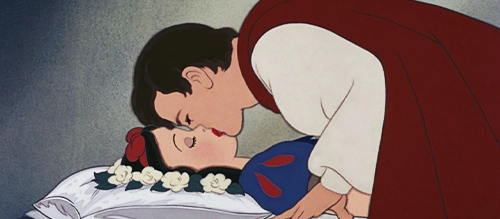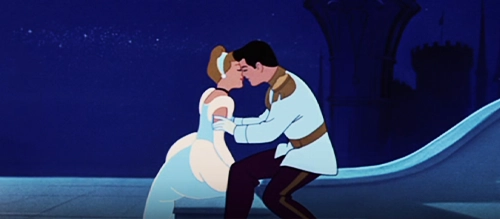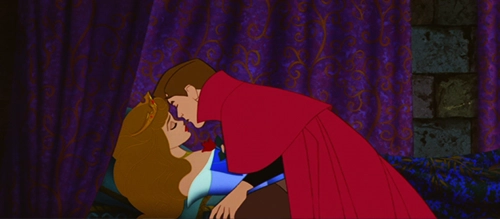Snow White, Cinderella, Sleeping Beauty: Classic Disney Princesses Through the Eyes of a Modern Maiden
Classic Disney was about love conquering all. If you were a boy (whether a deer, an elephant, or a wooden puppet), that love would come from your parent if not a sexy young doe with unfeasibly long eyelashes. If you were a girl, then that love came in one form only: he was dashing and he was prince-shaped. After a bit of bother with a step-mother you would meet him – perhaps through a window, maybe because your pet owl had stolen his cap – and within a day or so you would get your happily ever after.
That seemed to be the only story on offer.
Your goodies were good, and your baddies were downright evil, there was no context or grey areas. Female jealousy seemed to be enough to turn a queen into a witch. The villains in early Disney were quite often women. Jealous and catty, sure, but so powerful. Rich and assured of themselves. What a great aspiration for the young girls of the 40s and 50s. Their employment opportunities were terrible, but they felt confident they could rock a cape and pair of horns.
Nowadays, the offerings from Disney are more progressive, and much more representative. Encanto (2021), Luca (2021), Strange World (2022) and Turning Red (2022) certainly explored complex and diverse storylines and characters, especially when compared to the studio’s earlier offerings. And while modern Disney princesses are still often found in ballgowns, young audiences are well-accustomed to them being adorned with weaponry as well.
So, what does a child with a decidedly modern palate make of Snow White and the Seven Dwarfs (1937), Cinderella (1950) and Sleeping Beauty (1959)? While they continue to be favourites for many Disney fans, it is easy to argue that there isn’t much about them for a feminist… or a nine-year-old who’s being raised by a feminist (let’s call her E).
Up until this point, E hasn’t seen these particular films because there just seemed a bit too much cleaning up after men, falling head over heels with them before anyone’s got to know anyone properly, and getting kissed while unable to give consent for it, to be a suitable tale for a 21st Century lass.
Will the films prove E’s mother wrong? Or will they be the heteronormative, stereotype-riddled dinosaurs she suspects them to be? Will E be swept along by the romance of it all and demand to watch on repeat forever more?
Snow White and the Seven Dwarfs (1937)

Snow White and Seven Dwarfs Review
When Disney released Snow White in 1937, it became an instant classic, and to this day it remains critically acclaimed and revered as one of the greatest animated films of all time. Snow White became lore and left ripples of influence through every Disney film that followed.
‘You can tell that’s drawn,’ was the first thing E had to say about Snow White (1937). This is actually a selling point of the movie, the incredible feat of the animators who crafted each image (up to twenty-four for every second of film) and created that beautiful, dreamlike effect. But for a kid whose first Disney experience at the cinema was Inside Out (2015), Snow White might as well be carved in stone.
The second thing the modern miss could not get her head around was the clipped affected tones of a 1930s Hollywood starlet. In fact, the story of Adriana Caselotti’s employment is particularly unfeminist too. Disney blocked her from other voice work so not to disrupt the illusion of Snow White. E struggled so much with the willowy wisp of her voice that subtitles had to be employed. The explanation that some women used to make themselves sound like that to be more appealing just didn’t compute.
‘But why?’
One extremely troublesome line in the film is ‘I’m so ashamed of the fuss I’ve made.’ This is uttered immediately after someone our heroine trusted has attempted to murder her. Fortunately, E was still so concerned about the voice that she hadn’t quite focused in on what was being said yet. It is hard to imagine Esmeralda or Anna saying anything quite as timid.
Snow White is at least proportionately realistic for a thirteen-year-old girl, which in a world of Barbies, Auroras, Belles and Elsas, is definitely worth something. Snow’s sensible eyes should get a mention here too, something the later princesses lack. It’s a wonder that Rapunzel can keep her head up, quite frankly.
In films that followed after, the magic of true love’s kiss is acknowledged, it’s mentioned, it’s prescribed. Because Snow White was the first, that means that Prince Charming, apropos of nothing, went out for a stroll and snogged a girl he thought was dead. How romantic.
Because E has seen those subsequent films, she knows that true love’s kiss will wake you from a poison apple coma (duh), so she wasn’t too perturbed by the notion of the prince kissing Snow. Her mother still doesn’t like it though.
The thing that struck E was that there were lots of boys in it, ‘even though it’s for girls.’ She has obviously never been told that Snow White is for girls, but she has been in Primark, she knows the boy section doesn’t have hoodies with Snow White, Cinderella or Sleeping Beauty on them, so she knows it’s not for them…
Cinderella (1950)

Cinderella (1950) is another film where the leading lady falls head over implausibly-tiny-heels in love with her guy within moments of meeting him. But at least she speaks to him before he shoves his tongue down her throat. To be fair, he seems equally besotted.
Cinderella is far sassier than Snow White, but does the film fare any better under the watchful eye of E and her reluctant mother?
While Cinderella is vocal about her unhappiness, she is entirely dependent on whether the men in her life can rescue her. Whether that’s a prince, a mouse or a dog. Cinderella has little autonomy besides deciding whether to change Anastasia’s sheets before Drizella’s, or not. But that is something.
Actually, E didn’t really see the sexist stereotypes at play in Cinderella (1950). Maybe this is because she has been raised in a house that constantly refutes them, or simply because she has had the choice to see Disney women lead armies across China, fight ice monsters, choose not to marry, or break family curses through sheer stubbornness. Watching a woman in a domestic role is a rarity for her, so it literally can’t be a stereotype.
She didn’t see the mouse saying ‘leave the sewing for the women’ as problematic, only that those women must be better at sewing than those particular men. Her mother felt Gus Gus could probably have had a crack at it – he would’ve probably still been better than Flora, Fauna or Merryweather.
Sleeping Beauty (1959)

In one of the earlier text versions of Sleeping Beauty, the young woman is actually woken by her baby breastfeeding. Her second baby born since she’d been put to sleep by the curse. While the Disney version of Sleeping Beauty (1959) does have a more PG wake up routine, there is still a palpable lack of consent (unless betrothal counts?). Like Cinderella, at least Aurora had met and spoken briefly to Philip before deciding that he was the one for her. And unlike Snow White’s Charming, Philip is told explicitly that his kiss will wake the princess and restore the kingdom. Slightly less gross. Also, pressure.
E found Sleeping Beauty (1959) ‘a bit too lovey’ and ‘quite boring.’ For children used to ‘Minecraft’ Creepers, and those mind-bending goggles from Incredibles II, Maleficent’s raven doesn’t quite bring the chills it might have done in the sixties. If the main peril doesn’t feel perilous, and the main thing driving the protagonist (falling in love) isn’t exciting enough, then the film is going to fall flat.
On the face of it, Sleeping Beauty (1959), has more to offer. Dragons, sword fights and sarcastic fairies. But, of the three films, Aurora has the least autonomy. Yes, Snow’s choices were bad – never take apples from obviously evil crones in the woods – but they were her own. Whereas Aurora doesn’t decide to be cursed, she doesn’t decide to leave her family home and bunk in the woods for 16 years, she doesn’t decide to prick her finger on a spindle, and she doesn’t even get to decide when she wakes up. The one thing she does decide is that she is madly in love with the first man she ever meets. A 2D character in every sense of the word.
Sleeping Beauty also seems to be the turning point for the animators’ choice to make these teenaged princesses figures hourglass and unattainable. True, Cinders looks smashing in her gown but looks slightly more realistic in her brown smock. Aurora’s forest garb seems to include a corset.
But why?
There is something almost pure about watching early Disney, when the films were the focus. The stories were the only thing on offer. Watching these three films with a modern child was interesting, not that E had particularly nuanced wisdom to share but because they really proved how far Disney has come. E has no interest in watching Snow White or Sleeping Beauty ever again (a damning review), which suggests that they don’t offer what a growing girl needs. It might also suggest that her mother was vindicated in thinking these films were unsuitable.
Nowadays, it’s harder to separate out Disney films from the commercialism that comes with them. Is another Toy Story needed, or is it just an excuse to sell toys? But given that children have got content coming at them from so many sources, the films the studio produces have to be incredible. They have to be capable of grabbing attention that is pulled in many directions. Even with awkward product placement and exorbitant park prices, the stories have developed and continued to be a spectacle (Planes: Fire & Rescue (2014), aside). Not only do the films have to be engaging, they have to be engaged. Modern films have to reflect modern appetites and sentiments.
It’s always good to acknowledge what came before. Cinderella waltzed so that Merida could run. Kids learning to love Disney films today get to access worlds with stories that stretch far beyond romantic love and castles. And that can only be a good thing. Much to E’s mother’s chagrin, Snow White, Cinderella and Aurora will never be fully obsolete. Nostalgia will keep them alive for generations to come. Just perhaps not in E’s house.
Recommended for you: Animated Disney Villains Ranked

